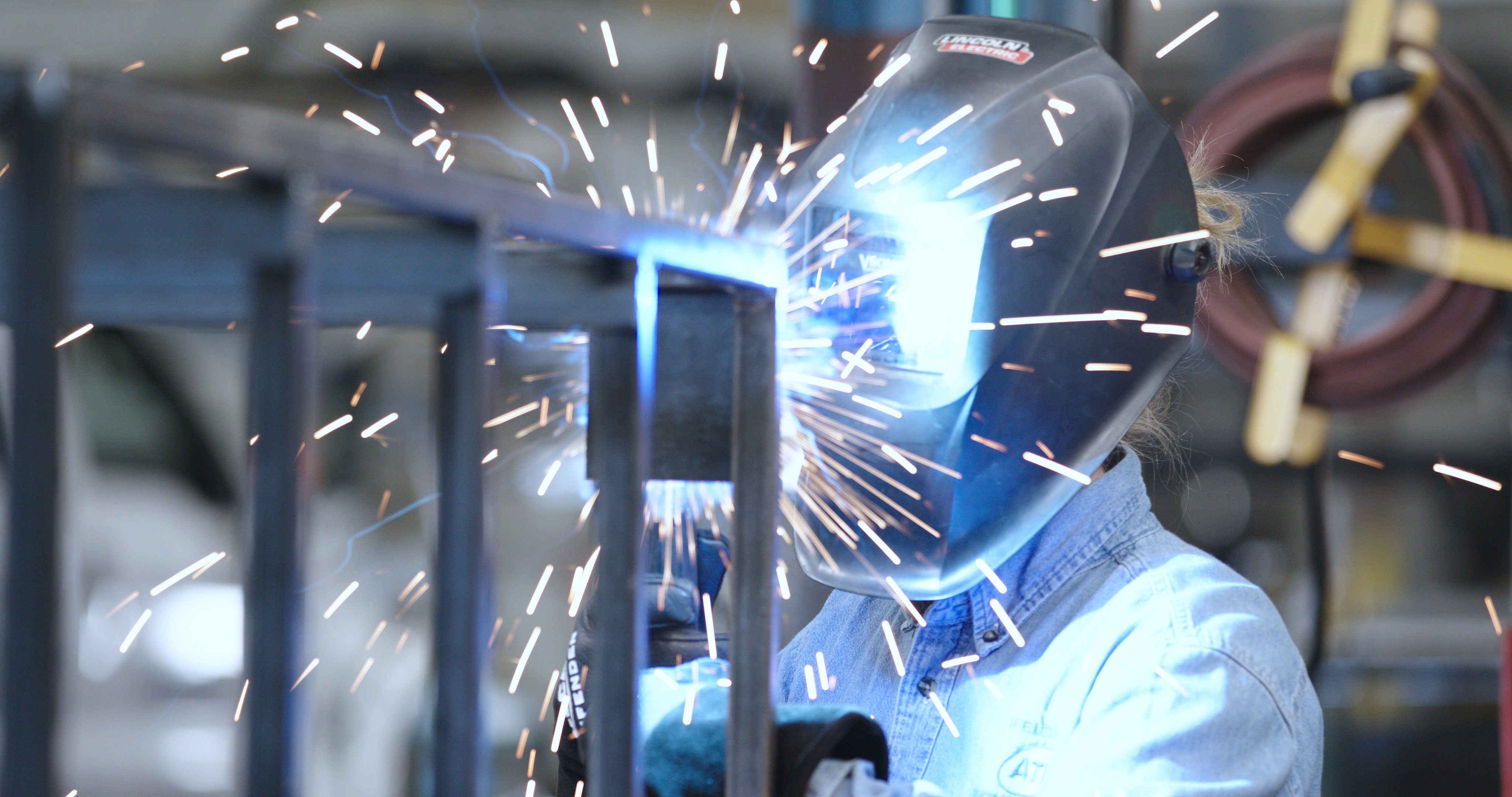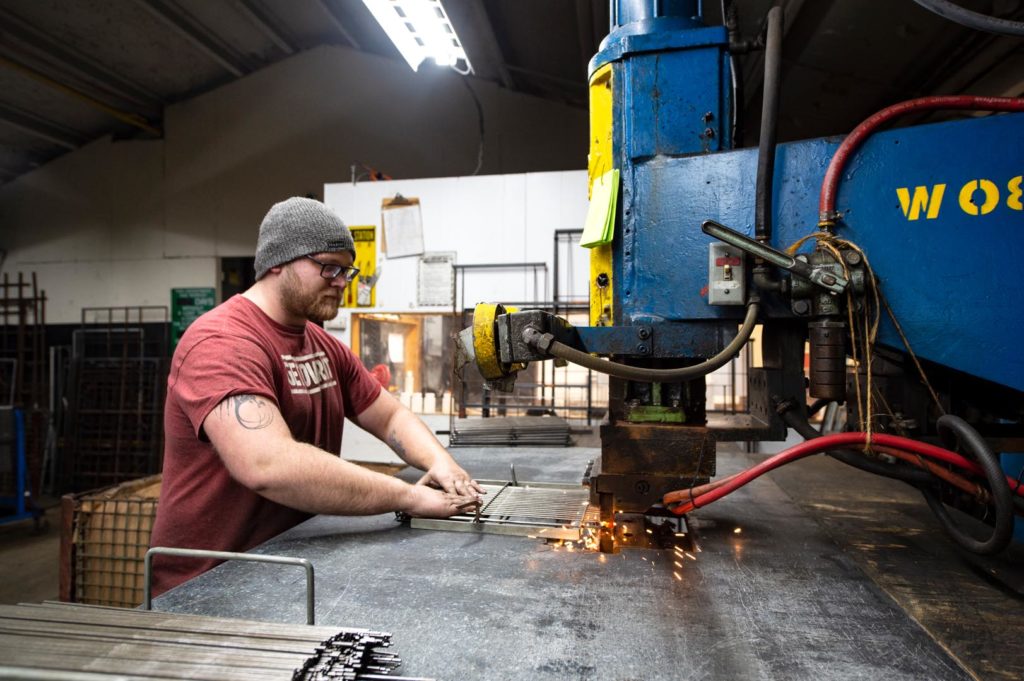Common Welding Repair Service Issues and How to Address Them Successfully
Welding fixings typically run into a series of problems that can jeopardize the integrity of the last product. Typical problems consist of poor penetration, porosity, and misalignment, to name a few. Each issue presents unique difficulties that need details techniques for resolution. Understanding these problems is crucial for welders intending to enhance their abilities and outcomes. This discussion will certainly check out these usual welding repair concerns and reliable techniques to resolve them.
Inadequate Penetration
Inadequate infiltration happens when the weld metal falls short to totally fuse with the base material, leading to weak joints and potential architectural failings. This concern usually comes from not enough warmth input, incorrect electrode angle, or inappropriate welding rate. Welders might experience inadequate infiltration because of a miscalculation of the essential criteria for a details material thickness or kind. Furthermore, contamination on the base product's surface can hinder reliable bonding, aggravating the problem. To deal with insufficient infiltration, welders need to ensure ideal settings on their equipment and preserve a clean job surface. Routine inspection of welds is advised to determine any deficiencies early, enabling timely improvements and the prevention of endangered structural stability in welded assemblies.
Porosity
Porosity is an usual issue in bonded joints that manifests as little gas bubbles caught within the weld steel. This defect can compromise the stability of the weld, causing reduced toughness and prospective failure under stress and anxiety. Welding. Porosity generally arises from contamination, wetness, or inappropriate welding strategies, which enable gases to leave into the molten weld swimming pool. To attend to porosity, welders need to assure correct surface area preparation, keep a clean workplace, and use appropriate welding specifications. Additionally, picking the appropriate filler material and shielding gas can reduce gas entrapment. Routine assessment and testing of welds can aid identify porosity early, assuring timely restorative actions are taken, thus maintaining the high quality and dependability of the welded structure
Misalignment
Imbalance in welding can arise from various elements, including improper setup and thermal development. Understanding the origin is vital for effective resolution. Several modification strategies are offered to realign elements and assure architectural honesty.
Reasons of Misalignment
Welding misalignment typically originates from a selection of underlying concerns that can jeopardize structural stability. One main cause is improper fit-up of components prior to welding, which can cause voids and irregular surfaces. Variants in thermal expansion throughout the welding procedure can additionally result in distortion, specifically if the materials being signed up with have various coefficients of growth. Additionally, poor securing and fixturing might stop working to hold elements securely in location, leading to activity during welding. Badly conserved devices, consisting of welding equipments and devices, might introduce disparities in the weld bead, additional contributing to imbalance. Finally, operator error, coming from inadequate training or experience, can also play a substantial duty in developing misaligned welds.
Adjustment Strategies Readily Available
Addressing misalignment properly needs a combination of restorative techniques customized to the details problems at hand. One usual technique is the usage of jigs or components to hold elements in the appropriate placement during welding, making sure constant positioning. Furthermore, preheating the materials can help in reducing distortion and improve fit-up. For substantial misalignment, mechanical realignment strategies, such as making use of hydraulic jacks or clamps, can be utilized to remedy the position prior to welding. Post-weld warmth therapy may additionally be necessary to eliminate stresses triggered by imbalance. Finally, cautious assessment and change during the arrangement phase can protect against imbalance problems from ending up being substantial problems, advertising a smoother welding procedure and boosting overall architectural stability.
Distortion
Distortion is a typical difficulty in welding that can emerge from different aspects, including uneven cooling and heating. Comprehending the causes of distortion is essential for executing efficient avoidance strategies. Resolving this issue not only boosts structural stability but also enhances the total quality of the weld.
Sources of Distortion
When based on the intense heat of welding, products typically go through adjustments that can cause distortion. This phenomenon mostly he said arises from thermal expansion and tightening during the welding procedure. As the weld area warms up, the material broadens; upon cooling, it acquires, which can create internal anxieties. In addition, irregular heating across a work surface can worsen these stresses, leading to bending or bending. The sort of material additionally plays a substantial duty; metals with differing thermal conductivity and coefficients of development may respond in a different way, bring about unforeseeable distortions. Bad joint style and poor fixturing can add to misalignment during welding, raising the probability of distortion. Recognizing these causes is vital for reliable welding repair work and avoidance techniques.
Avoidance Techniques
Effective prevention techniques for distortion during welding focus on regulating heat input and ensuring correct joint layout. Keeping a regular warmth input aids to lessen thermal expansion and tightening, which can cause distortion. Using techniques such as preheating the work surface can also decrease the temperature gradient, promoting consistent home heating. Furthermore, choosing appropriate joint designs, such as T-joints or lap joints, can improve security and decrease anxiety focus. Carrying out correct fixturing to secure the work surfaces in area visit this site right here further aids in maintaining alignment during the welding process. Staggered welding sequences can disperse warmth a lot more evenly, preventing localized distortion. By applying these approaches, welders can significantly reduce the probability of distortion and enhance the total high quality of their welds.
Cracking
Breaking is an usual problem come across in welding repair services, often resulting from different variables such as improper cooling rates, material option, or insufficient joint prep work. The event of cracks can substantially compromise the honesty of the weld, resulting in prospective failings during procedure. To resolve this issue, welders need to initially evaluate the source, guaranteeing that products are compatible and suitably chosen for the certain application. Furthermore, managing the cooling price throughout the welding process is important; fast air conditioning can cause anxiety and lead to splitting. Proper joint style and prep work additionally add to decreasing the risk. Carrying out these methods can boost weld top quality and toughness, inevitably lowering the probability of cracking in finished weldments.

Insufficient Combination
A substantial problem in welding repair work is incomplete fusion, which happens when the weld metal does not appropriately bond with the base product or previous weld passes - Belgrade Welding. This issue can result in weaknesses in the joint, possibly compromising the honesty of the welded framework. Aspects adding to incomplete blend include not enough warm input, improper welding strategy, and contamination of the surface areas being joined. To address this concern effectively, welders ought to ensure appropriate pre-weld cleaning and surface area preparation, as well as adjust their welding parameters to attain appropriate penetration and fusion. Regular evaluation throughout the welding process can also help recognize insufficient blend early, enabling timely corrective procedures to boost the total high quality of the weld
Overheating
While welding repairs can enhance structural integrity, overheating offers a significant challenge that can result in product deterioration. Extreme warmth throughout welding can modify the mechanical properties of metals, leading to lowered toughness, increased brittleness, and warping. This sensation is particularly important in high-stress applications where architectural integrity is critical. Recognizing getting too hot can involve aesthetic inspections for staining or distortion, along with keeping an eye on temperature during the welding process. To alleviate the threats related to overheating, welders ought to utilize ideal strategies, such as managing warm input, adjusting traveling speed, and making use of suitable filler products. In addition, executing pre- and post-weld warm treatments can aid bring back product homes and enhance the general top quality of the repair service, ensuring lasting efficiency and security.
Frequently Asked Concerns
What Are the Typical Indications of a Welding Defect?

Exactly How Can I Test My Welds for Quality?
To check welds for high quality, one can utilize aesthetic inspections, ultrasonic testing, and radiographic techniques. Each strategy assures architectural stability, recognizes problems, and validates adherence to defined standards, ultimately enhancing the dependability of the welded joints.
What Safety Safety Measures Should I Take While Welding?
When welding, one ought to prioritize safety and security by wearing appropriate personal protective devices, making sure appropriate air flow, safeguarding flammable materials away, preserving a tidy office, and knowing environments to avoid mishaps and injuries.
Can I Fix a Weld Without Redoing the Entire Joint?
Fixing a weld without redesigning the entire joint is feasible, depending upon the damages (Montana Mobile Welding and Repair Belgrade). Strategies such as grinding, including filler material, or using a welding process can efficiently deal with particular defects while preserving the bordering framework
What Equipment Are Vital for Effective Welding Repairs?
Crucial tools for effective welding repair work consist of a welding device, cord brush, mill, safety equipment, clamps, and filler products. Each tool plays an important duty in making sure quality and safety during the repair work process. Porosity commonly emerges from contamination, moisture, or improper welding methods, which permit gases to leave right into the liquified weld swimming pool. Badly kept devices, including welding equipments and tools, might introduce inconsistencies in the weld bead, additional adding to imbalance. When subjected to the intense warm of welding, products commonly undergo adjustments that can lead to distortion. Fracturing is an usual problem come across in welding repair work, typically resulting from numerous elements such as incorrect air conditioning rates, material choice, or poor joint preparation. A substantial concern in welding repairs is insufficient combination, which takes place when the weld metal does not sufficiently bond with the base product or previous weld passes.